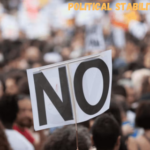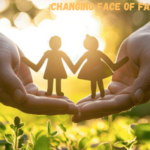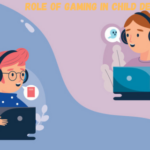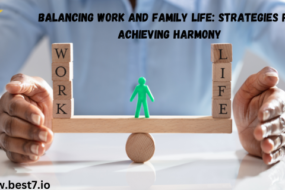
Marriage is slowly changing in a modern world as cultural shifts redefine many traditional views and social norms. The modern views on marriage represent a set of broader changes in society. It can be described by the higher level of flexibility, alternative types of relationships, and shifting commitment.
Marriages in the modern world are determined by the greater level of freedom, and as people strive to achieve career goals or personal needs, they strive to express their attitudes to marriage as well as family and establish a new view of these from the cultural point of view.
By changing these attitudes, the effects of the culture extend not only the timing and type of relationships but also people’s perceptions of possible types of attitudes that can be applied to modern relationships.
Delayed Marriage and Changing Priorities
The most evident trend in modern views on marriage is the increase in the age to get married. Modern people are known to come to marriage later in life than previously. They strive to acquire education, establish careers, and develop individual traits first. This trend is also responsible for the changing view on marriage as the so-called special period of time in one’s life that all should experience.
The case study performed by the Pew Research Center in 2019 shows that the median age for first marriage is 30 in the U.S. for men and 28 for American women. In the 1950s, in turn, the median age of first marriage was 23 for men and 20 for women. This tendency suggests that modern marriage is now seen as a later-in-life event.
Some of the experts attribute this to the reasons that causes of delayed marriage include the desire to obtain a higher education, the need for financial independence, changing gender roles, as well as the need to establish a solid ground for one’s own and one’s family’s lifestyle.
The future predictions indicate that by 2035, the average age of first marriages in Western countries will increase by another 2–3 years. People may fully abandon such an institution because they prefer marrying later in life rather than not wanting to settle down at all.
Proposed predictions do not imply a complete loss of interest in marriage but rather its postponement for personal and career development. As a result, couples no longer rush to make a commitment and approach this step more carefully, paying attention to long-term compatibility.
No doubt, in the past decades, non-traditional marriages and different alternative relationship types have become one of the most emerging trends. Alternative relationship forms, including cohabitation, open marriages, and polyamory, are becoming more prominent as social change continually challenges the institution of marriage.
It also shows that changing marriage views based on past relationships has a broader scope of recognition as alternative relationships offer the same level or even more profound commitment between individuals, thus denying the notion that marriage is the only compatible form of commitment.
For example, according to the 2020 General Social Survey case study, 12% of U.S. adults were in an alternative relationship, such as cohabitation or consensual non-monogamy. This highlights the growing tolerance for non-traditional relationships and the tendency towards more flexible definitions of commitment where couples negotiate and choose the arrangements best suited to their needs.
A traditional marriage will not lose relevance in most communities, but alternative relationship types will increase in popularity, driving changes in family structure and social norms. By 2040, it is predicted that the percentage of Western adults involved in alternative relationships will reach 20%. More people can engage in various ways to get partners to replace the declining frequency of marriage.
The increasing trend of declining marriage rates observed in many countries points to a shift in societal perceptions about the nature of marriage as a lifelong institution. There has been a waning of marriage attributable to changing social conditions, including females gaining more independence economically and men losing that independence, the changing gender roles, and the increase in acceptance of singlehood and child-free living, among others.
These shifts have served to redefine the traditional nuclear family, and an increasingly diverse number of people do not feel the need to depend on legal marriage. According to the U.K. Office for National Statistics, for instance, while the number of marriages in England and Wales fell by 16% from 2008 to 2018, the number of cohabiting couples increased by 25%, and the number of common-law families, including single-parent households and stepfamilies, has risen as well. The question then is whether marriage will continue to decline in the future and to what extent it will decline.
From further forecasts, the marriage decline will continue in many developed countries in the future, with a predicted 10% decrease in marriage rates by 2050. However, this does not mean that marriage is coming to an end as an institution. It only means that there will be a diversification of family structures, with marriage as only one of the options for people looking for companionship and commitment.
The future of marriage is best seen against a background of changing demographic attitudes about the family life course as a strong focus in developing social policies. It is thus prudent for social policies and cultural attitudes to be proactive in guiding the formation of families and providing assistance to families so that these families remain central to society to safeguard the interests and rights of children.
By the standards of classical sociology and political science, there is a wide variety of demographic, political, and social factors that affect marriage. Some of these factors are understood to be purely economic, such as tax laws and norms governing the division of joint property in case of a divorce. However, cultural attitudes have had a definitive impact on the traditional perception of marriage as a life-long institution.
Today, relationships have undergone significant changes because the concept of modernity determines the relationships to a certain extent. The social perception of marriage has shifted to include more liberal and inclusive approaches to the matter. Couples today are more likely to be in love with one another, communicate, view marriage as a partnership, and express common values rather than view it as a unilinear female task of monetary dependence on the man, which is confirmed by Phipps.
Additionally, the case study indicates that the relationship between the overall cultural attitude to contemporary relationships and specific characteristics of the country in question may be seen as mutually influential.
From 2010 to 2020, in Sweden, the number of cohabiting couples increased by 15%. The case study notes that the overall number of marriages decreased while the overall number of cohabiting couples increased by 15% in 2010-2020. Such shifts reflect the effects of the overall cultural acceptance of alternative and modern relationship norms.
According to the authors of the Weeden and Liljeros case study, in 2045, cultural attitudes towards marriage will become even more liberal and alternative. In the analysis, they emphasized the overall revelance of a concept according to which relationships may become more individualistic and specific.
Thus, marriage within such a context will not be regarded as the standard model for a lifelong commitment. Individual relationships’ emphasis will be viewed as a common occurrence, especially in such liberal contexts as Sweden. In brief, I believe that future marriage trends will emphasize an individualized and equal relationship where marriage will no longer be the established rule. Instead, it will be an option chosen by both parties based on their values and interests.












